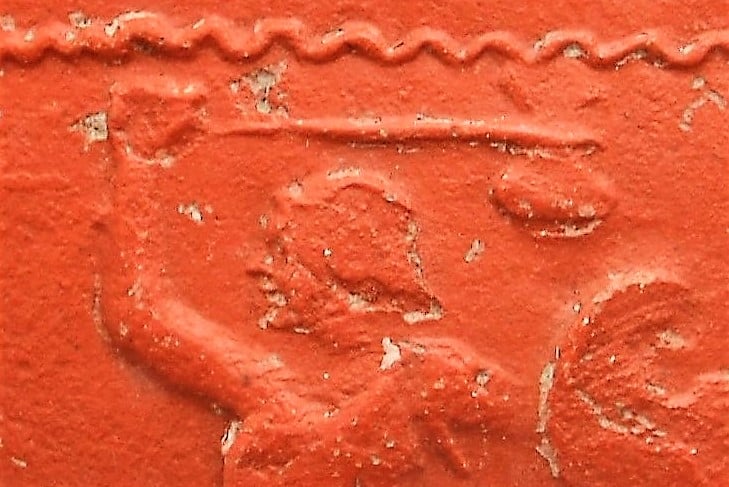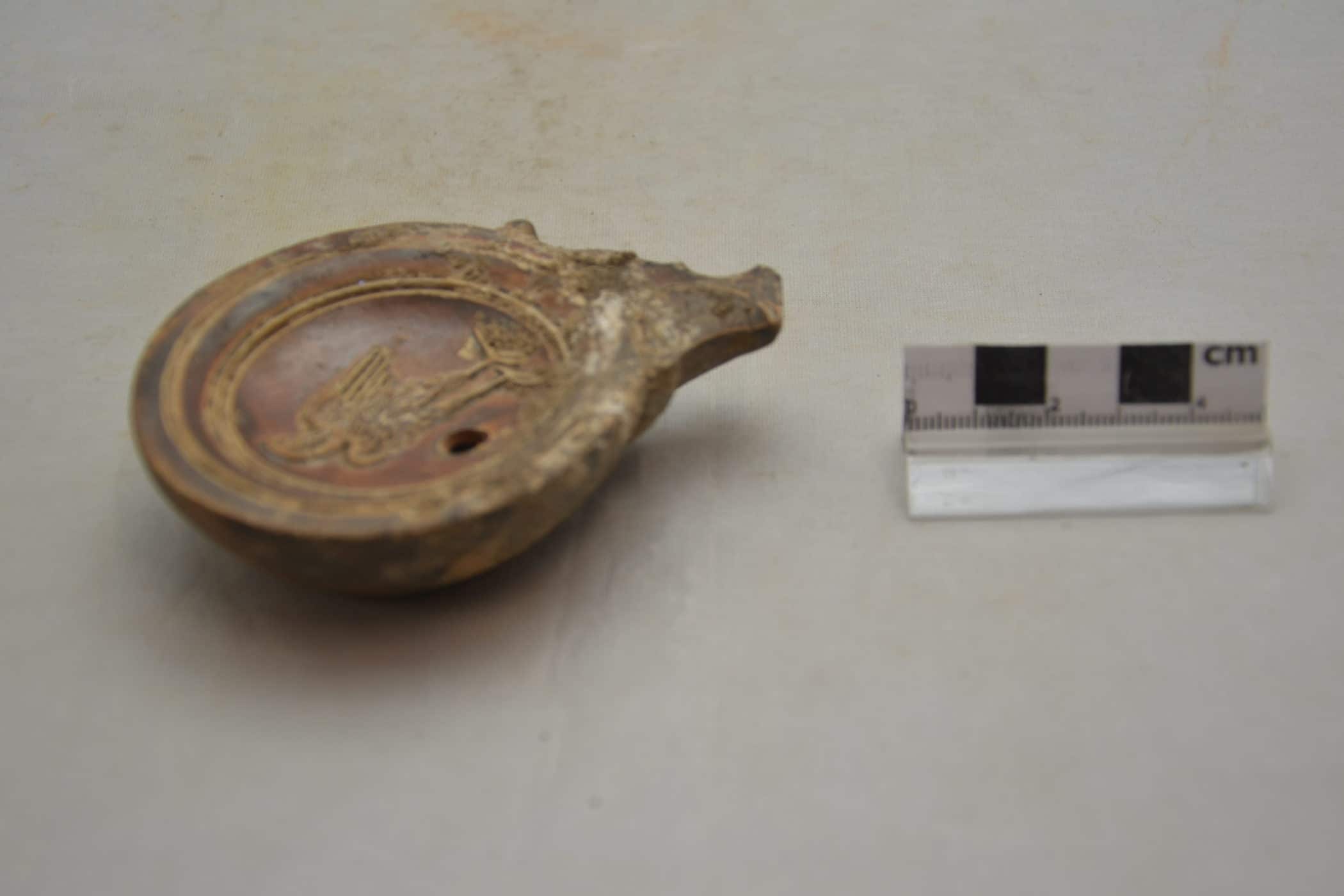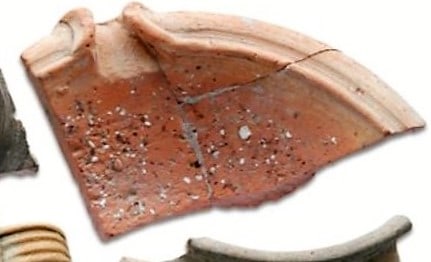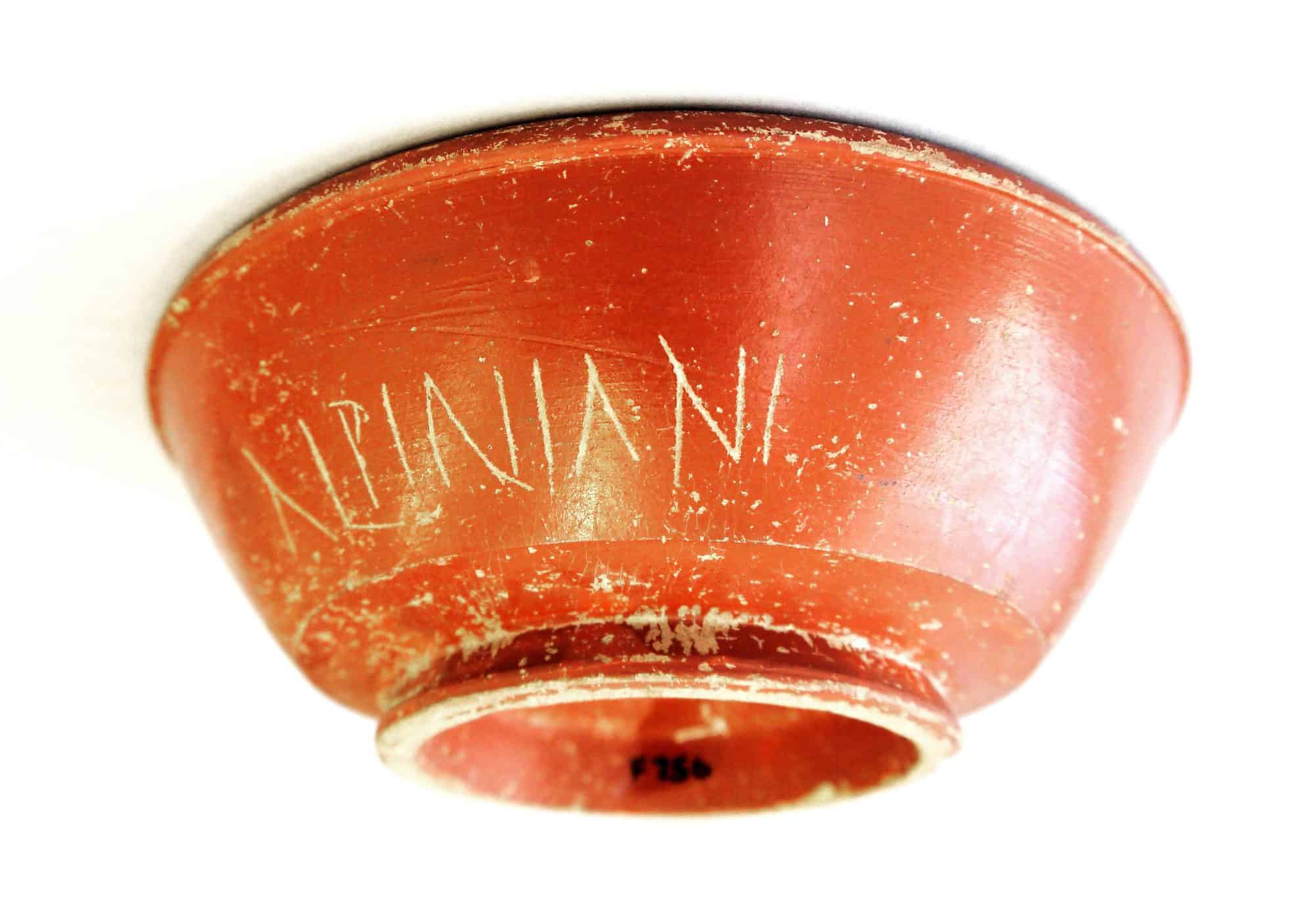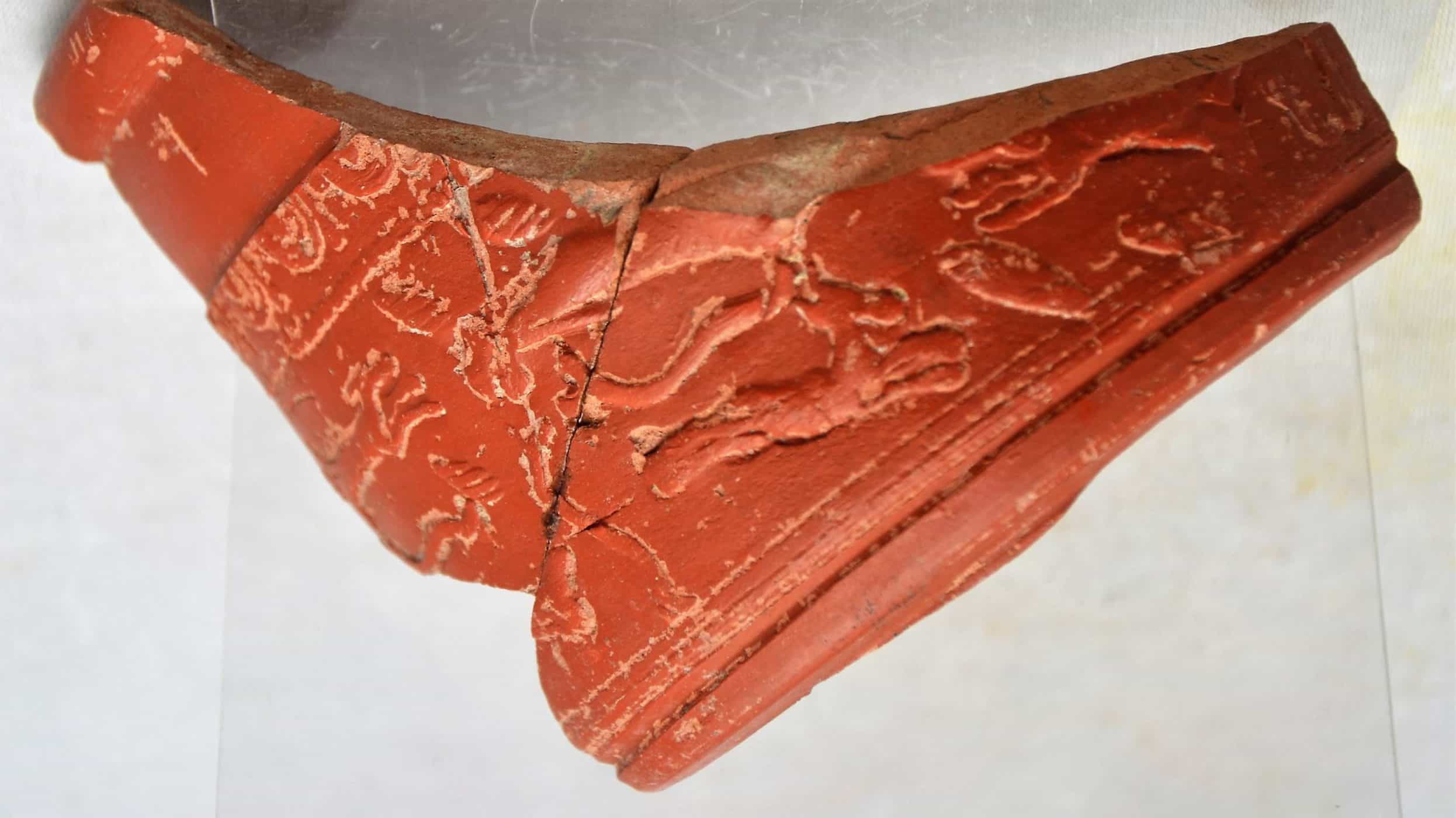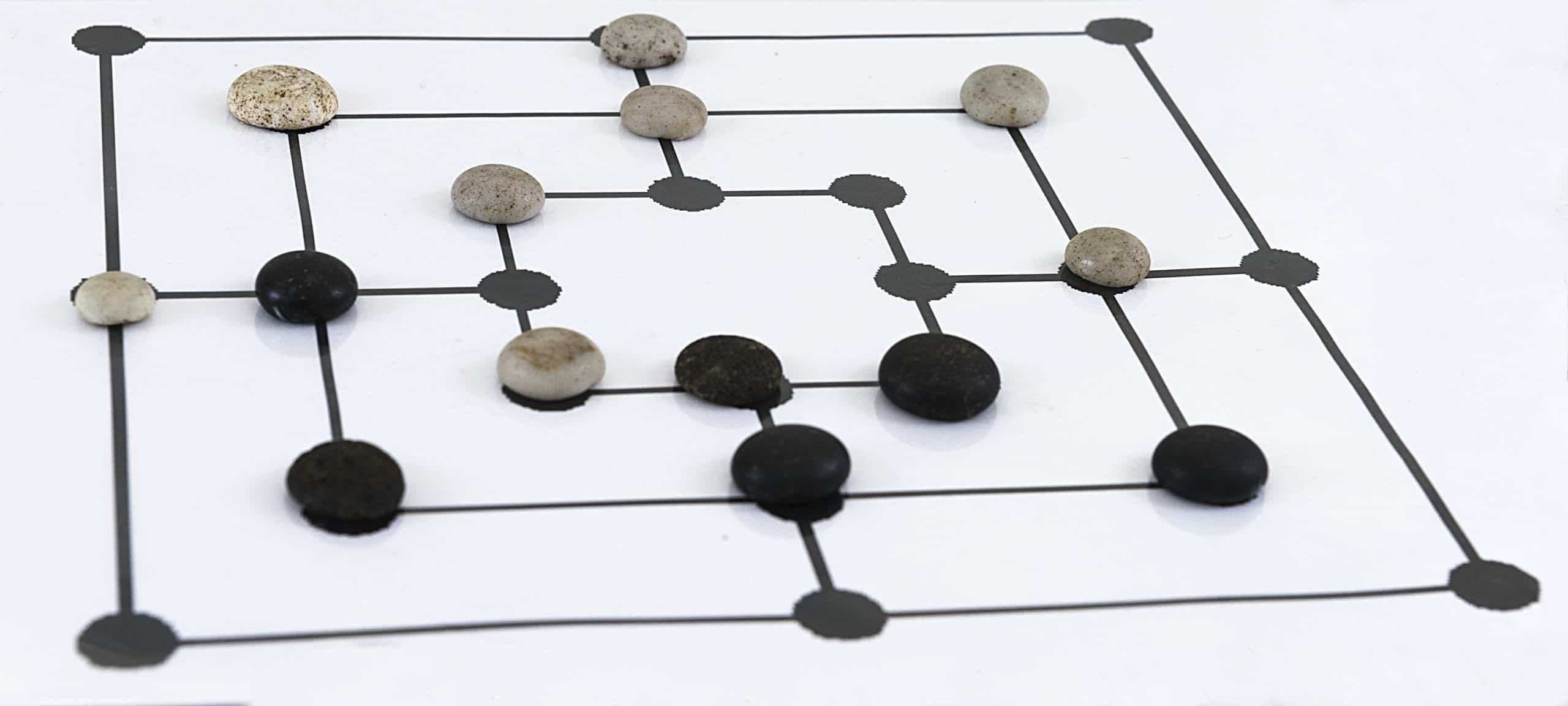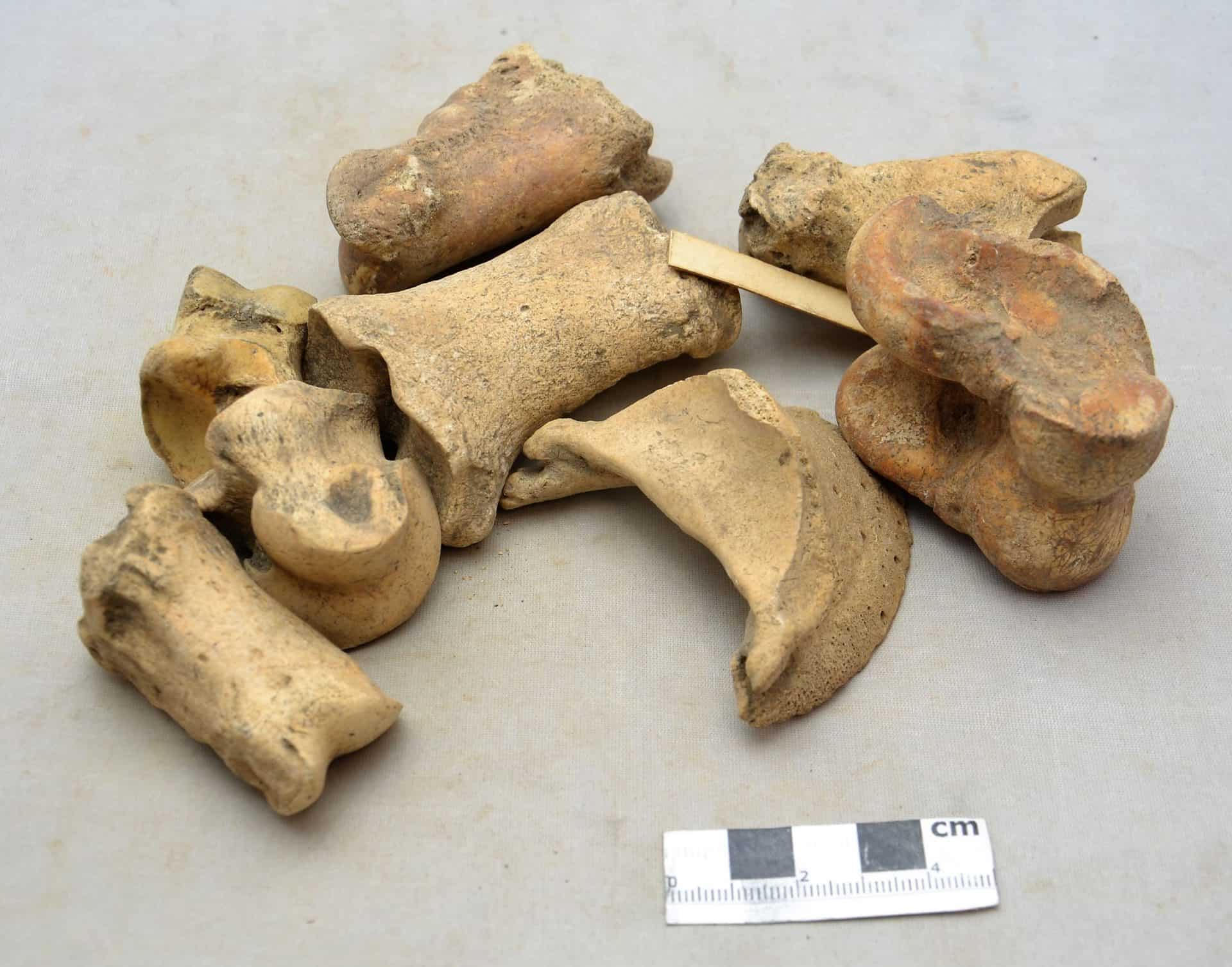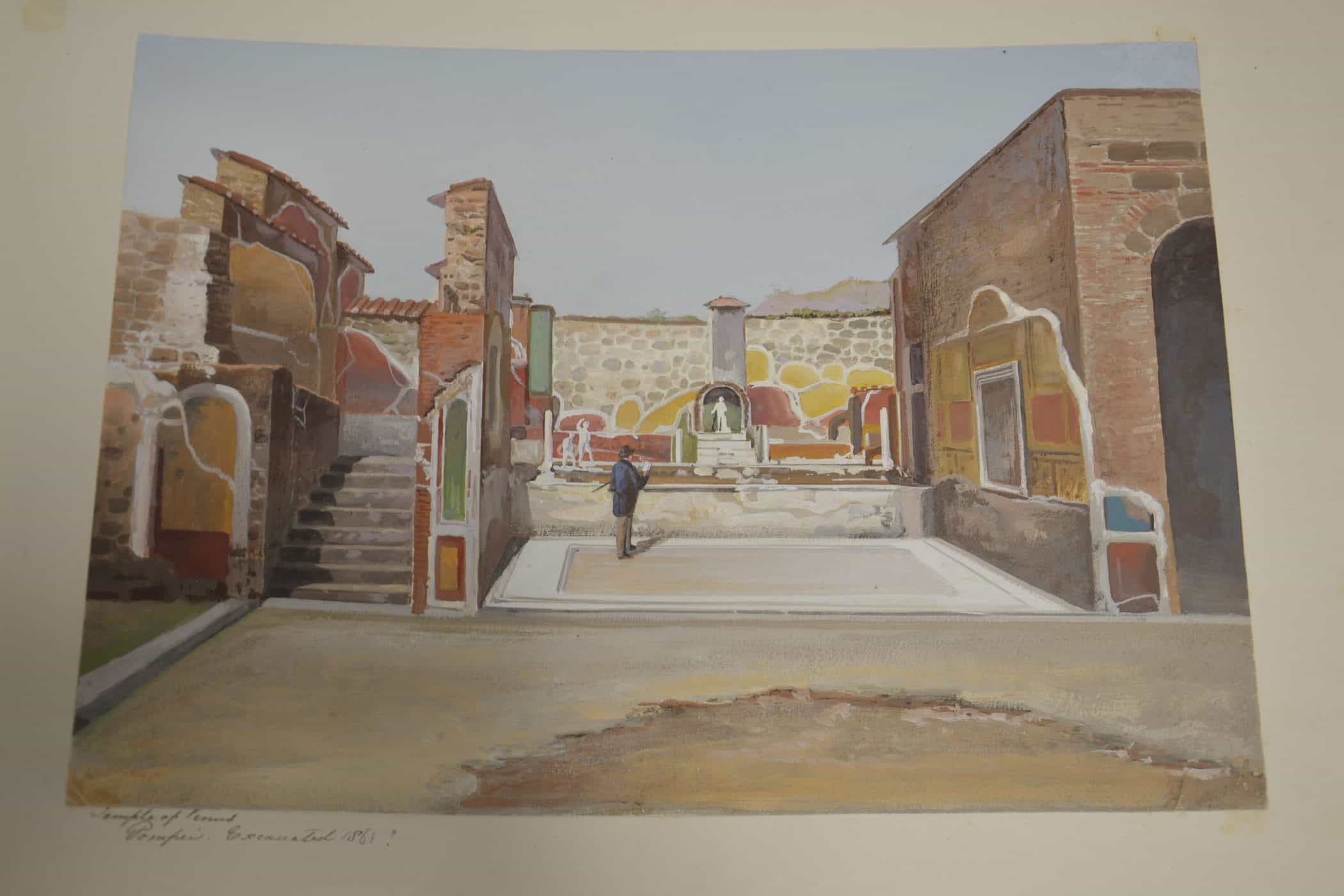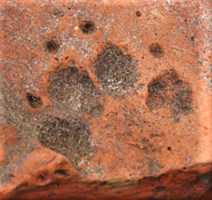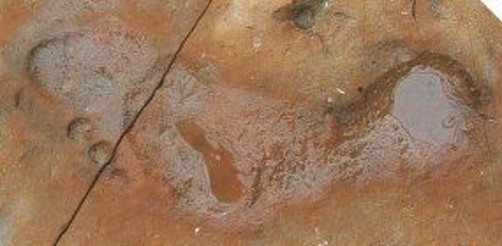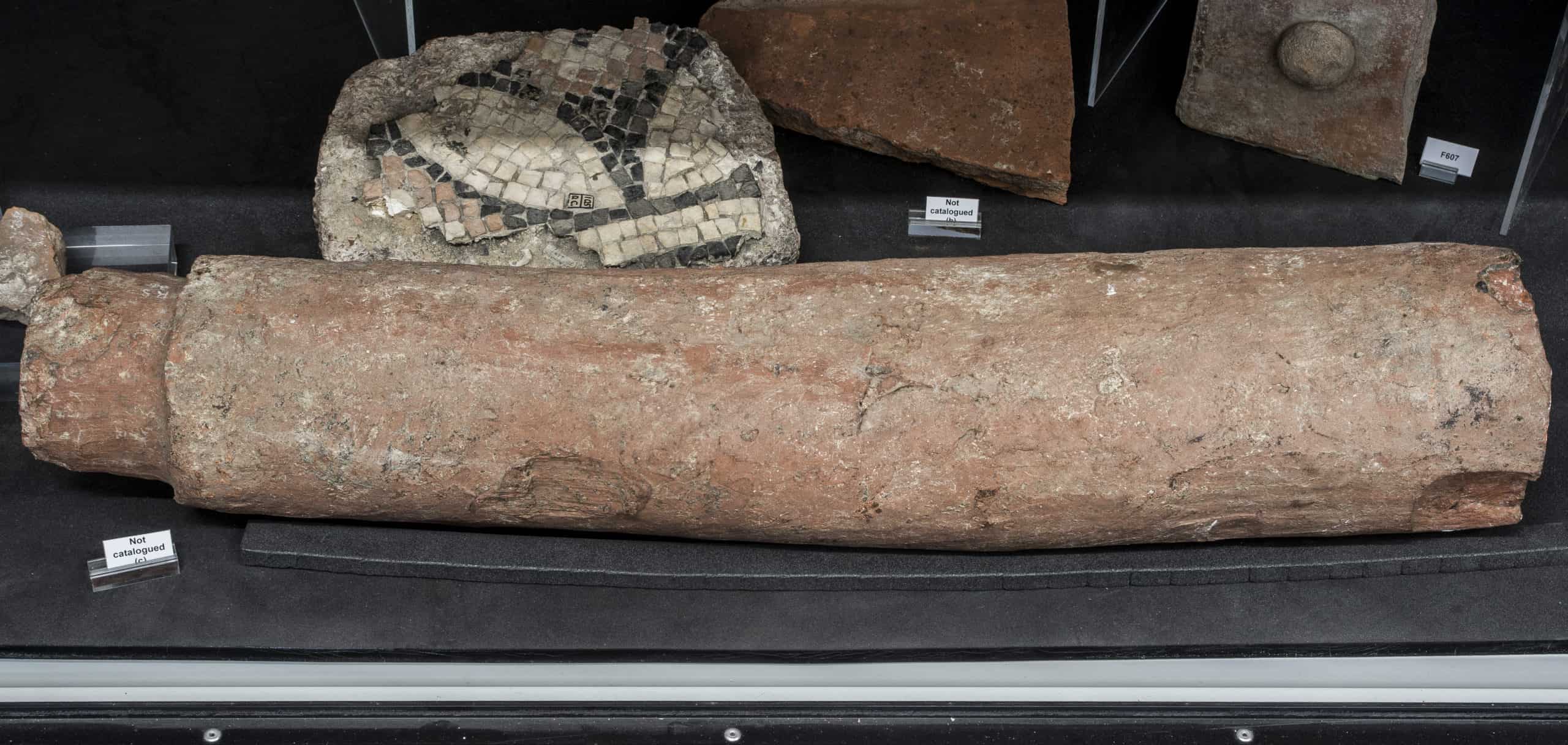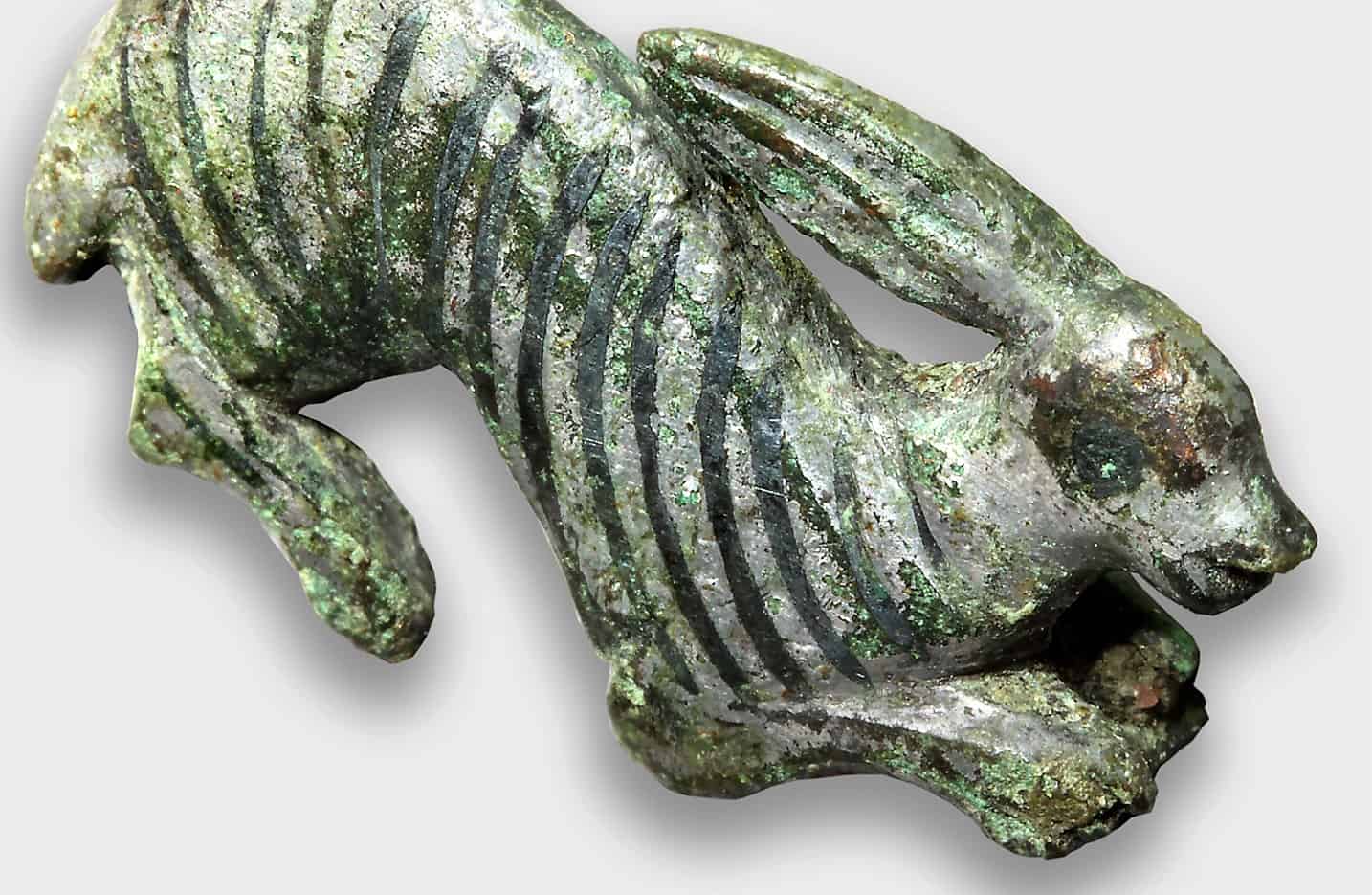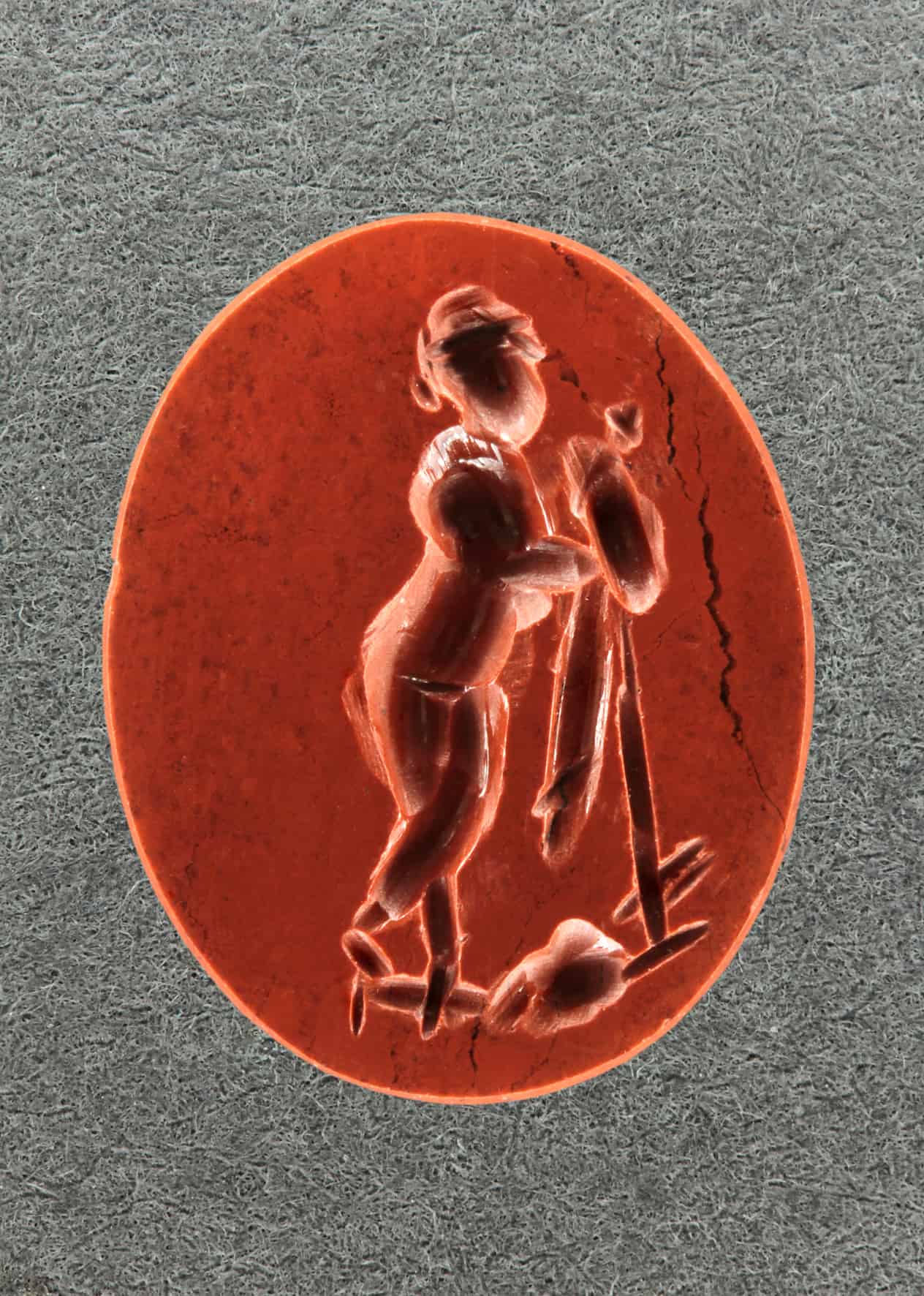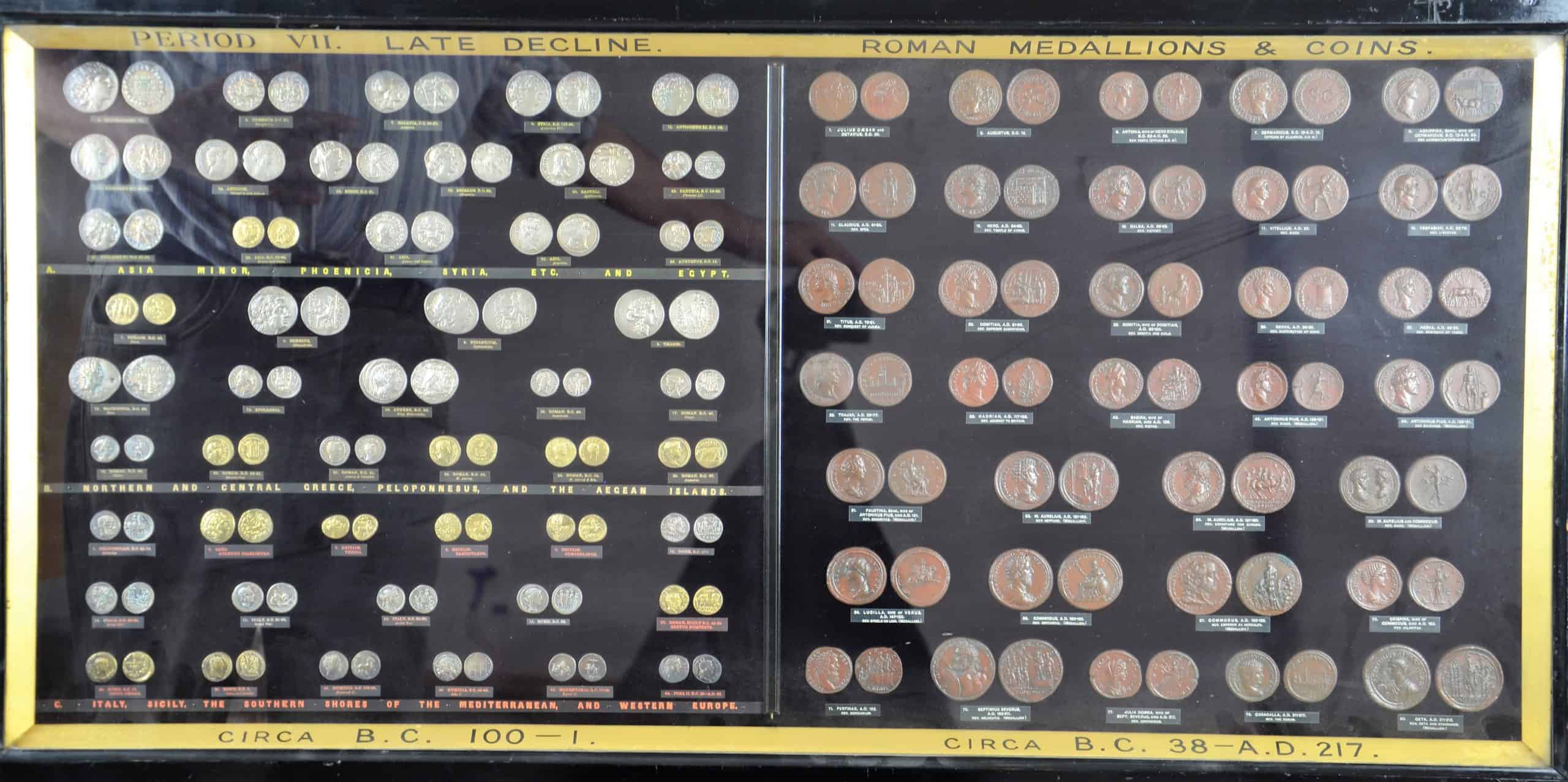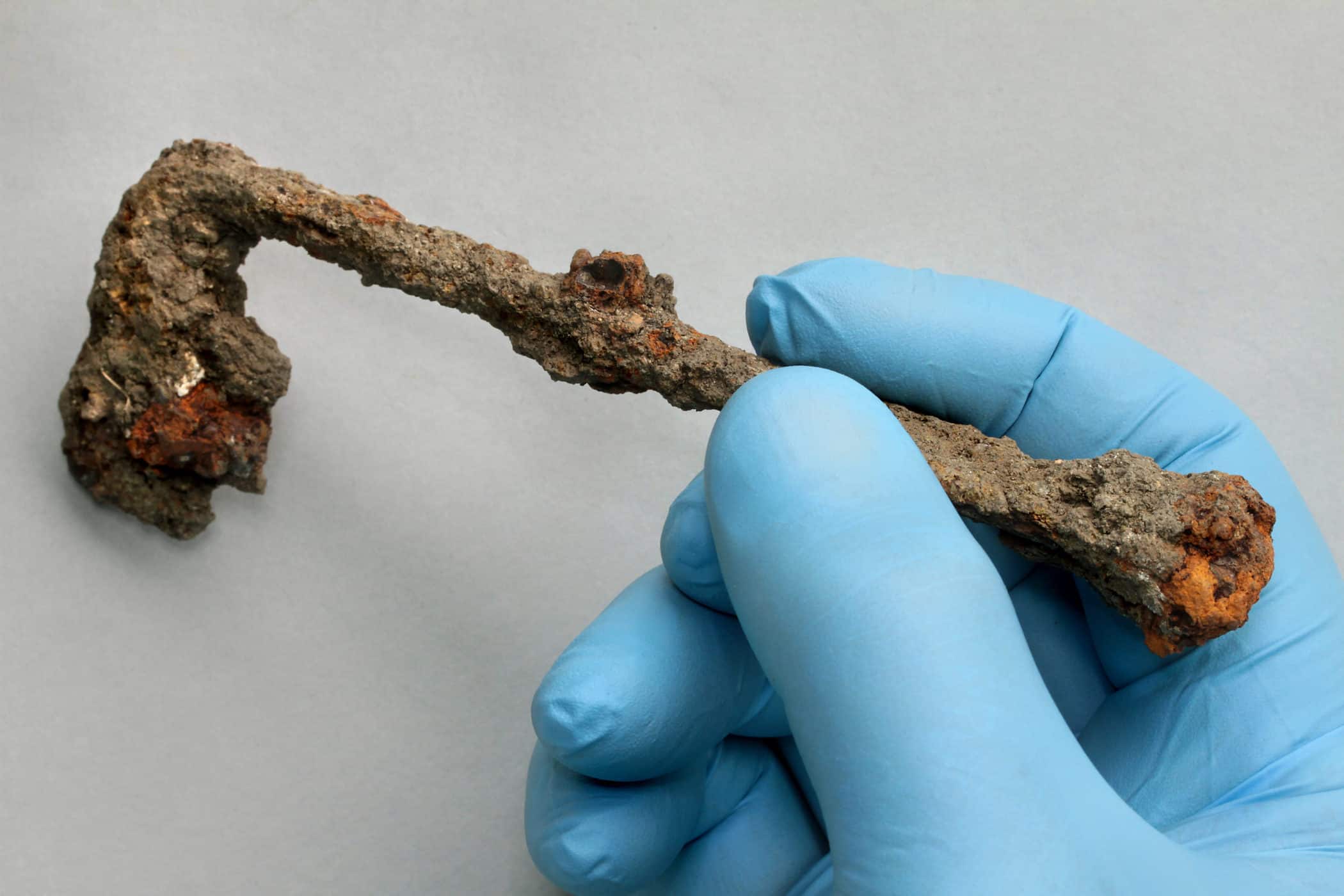Fragment of decorated Samian ware with gladiator(?) design. Discovered during the excavation of Folkestone Roman Villa by Samuel Winbolt in 1924.
Object: Romans
Print – the Roman amphitheatre at Nimes
Print of the Roman amphitheatre at Nimes in France, collected by Thomas Man Bridge while on his Continental Grand Tour in the 1830s. This forms part of the Master Collection at Folkestone Museum.
Roman amphora fragment
Roman amphora fragment. Top of amphora only, including neck and both handles.
Roman spindle whorl
Roman spindle whorl made from a re-used fragment of decorated samian. Found during the A Town Unearthed excavations at Folkestone Roman Villa, 2010 to 2013.
Roman Samian ware bowl with graffiti
This small, smooth, orange-red Samian ware bowl is a luxury import, made in Gaul (Roman France) and imported across the Channel. The bowl has been scratched with the name of its owner Alpinianus. Stamped on the bottom is the name of the potter IVNIANVS, who made the bowl in Lezoux, in central Gaul, between AD 100 and 150. Found during the excavation of Folkestone Roman Villa by Samuel Winbolt in 1924.
Roman Samian ware sherds with hunting scene
This fragment of Samian ware is part of a straight sided cylindrical vessel. The design is part of a hunting scene. A dog is running (on the left) chasing a larger animal, almost certainly a deer, now largely missing, although its rear end and back leg can be seen (centre top), either side of the join where the broken fragments have been stuck back together. A leaping buck, a young stag with its first stunted growth of antlers, is trying to escape (centre bottom). Part of a collection of 30 decorated Samian fragments listed under F0657. Found during the excavation of Folkestone Roman Villa by Samuel Winbolt in 1924.
Knuckle bones
8 complete or fragmentary animal knucklebones, used by Romans to play a game called knucklebones. The score depended on which side they landed. The highest throw was called Venus and the lowest the Dog.
Roman painted plaster fragment
Fragment of painted plaster found during the excavation of Folkestone Roman Villa by Samuel Winbolt in 1924. The design is a repeat pattern of oval shapes with pointed ends, in red-brown paint on a creamy yellow background.
Watercolour – Temple of Venus, Pompeii
Watercolour collected by Thomas Man Bridge. Number 46 shows tourists exploring the Temple of Venus, Pompeii. Excavated 1861. Brightly coloured wall paintings can be seen in the background.
Roman roof tile – dog paw print
A fragment of Roman roof tile with dog paw print, found during the A Town Unearthed excavations at Folkestone Roman Villa, 2010 to 2013.
Roman floor tile – human footprint
A fragment of Roman floor tile with human footprint, found during the A Town Unearthed excavations at Folkestone Roman Villa, 2010 to 2013.
Roman floor tile – Classis Britannica stamp
A complete Roman floor tile with CLBR (Classis Britannica) stamp found during the excavation of Folkestone Roman Villa by Samuel Winbolt in 1924.
Roman box flue tile
A box flue tile that allowed hot air from the hypocaust to flow through and heat the walls. Found during the excavation of Folkestone Roman Villa by Samuel Winbolt in 1924.
Roman water pipe
A large pottery water pipe (over a metre long), which once helped drain the Roman bathhouse. It would have slotted into a similar one. Found during the excavation of Folkestone Roman Villa by Samuel Winbolt in 1924.
Roman strigil
A strigil, a sharp-edged tool used to scrape the dirt and dead skin off bathers after they had come out of the caldarium or hot bath. This one is made from a sheep’s rib bone. It is one of two bone strigils discovered in the remains of the bath house at Folkestone Roman Villa. The writing scratched on it by Samuel Wimbolt, who excavated the site reads: Rib bone used as strigil found in apse: one also in bath. Found during the excavation of Folkestone Roman Villa by Samuel Winbolt in 1924.
Silver brooch of a running hare
A silver brooch in the shape of a running hare. Found during the A Town Unearthed excavations at Folkestone Roman Villa, 2010 to 2013.
Gem stone from a Roman ring
This tiny object is less than 1cm high. It’s a gemstone fitting or intaglio from a wealthy Roman lady’s finger ring. The missing ring would probably have been made of gold. Found during the A Town Unearthed excavations at Folkestone Roman Villa, 2010 to 2013.
Roman coin – Emperor Constantius
This is a bronze Nummus coin of Constantius I who was Roman Emperor between AD300-303. It is one of many Roman coins found by archaeologists at Folkestone Roman Villa.
Roman gold and silver medals and coins
This glazed museum display cabinet contains a collection of 162 Roman gold and silver medallions and coins from the period 100BC to AD217. Including examples minted in many different parts of the Roman Empire. The case heading is Period VII Late Decline.
Roman iron key
An iron key found during the A Town Unearthed excavations at Folkestone Roman Villa, 2010 to 2013.
Roman iron key
An iron key found during the excavation of Folkestone Roman Villa by Samuel Winbolt in 1924.
Roman mosaic fragment
Fragment of Roman mosaic, incorporating a leaf-shaped design made from cubes of black marble and white limestone. Label reads: Part of tesselated pavement Roman.
Drawing of The so-called Temple of Vesta, Rome
The so-called Temple of Vesta, Rome. Pencil on paper, 264 x 366mm
Drawing of a Roman ox cart
A Roman Oxcart by William Collins RA (1788-1847). Pencil, pen, black ink and watercolour heightened with white, on light brown paper, 364 x 455mm. Purchased by Thomas Man Bridge at Christies auction in 1847.
Drawing of the Trajanic frieze on the Arch of Constantine, Rome
Copy of Trajanic frieze on the Arch of Constantine, Rome. This drawing depicts a battle, with cavalrymen and foot soldiers.The men in armour are Roman soldiers. They are wearing plumed helmets and body armour or ‘cuirasses’. The man on the left with a flying cloak but no helmet is thought to represent the emperor Trajan.The men without armour are Dacians – ‘barbarians’ from the area of central Europe now in Romania.The battle scene is a Roman sculpture from the time of Trajan. It is a relief sculpture from the Great Trajanic Frieze that was once in the Basilica Ulpia in Trajan’s Forum, Rome. During the time of the emperor Constantine, before the fall of the Roman Empire, this sculptural relief was removed from its original location and incorporated in a new Arch of Constantine. This arch reused many Roman sculptures from the time of earlier emperors.
Drawing of Roman reliefs on the Arch of Constantine
Copy of Roman reliefs on the Arch of Constantine, Rome. On the left of the drawing is a depiction of a Roman boar hunt. Toga-clad Romans on horseback – the emperor Hadrian and his men – are attacking a wild boar. Can you see its rough skin, hooves and tusks? On the right of the drawing is depicted a Roman sacrifice to a deity. Two men in togas, representing the emperor Hadrian and a companion, stand on the left of an altar. A sacrifice is burning in front of a sculpture of the Roman god Apollo, recognisable by the lyre he holds. To the right of the altar a toga-clad man is holding a horse for Hadrian. On the bottom of the drawing is a pencil sketch of Roman figures, some of them standing and others seated. They are part of a relief sculpture from the time of Constantine. The two larger scenes are copies of Roman sculptural reliefs in the form of medallions from the time of the emperor Hadrian. The sketch along the bottom is from a long narrow frieze made in the time of Constantine. The frieze was installed below the two medallions on the Arch of Constantine in Rome. This arch reused many sculptures from the time of earlier emperors. It showed that Constantine was paying tribute to his predecessors but also made him their equal.

